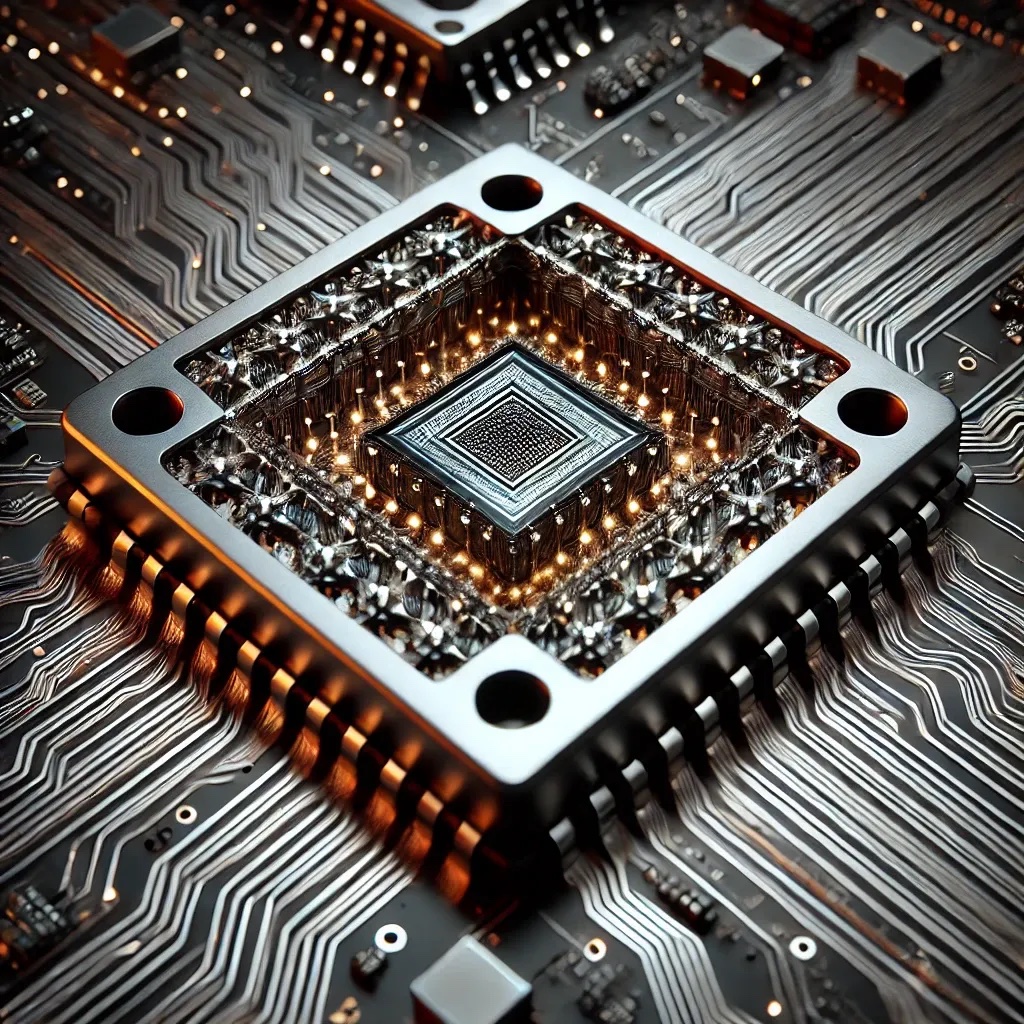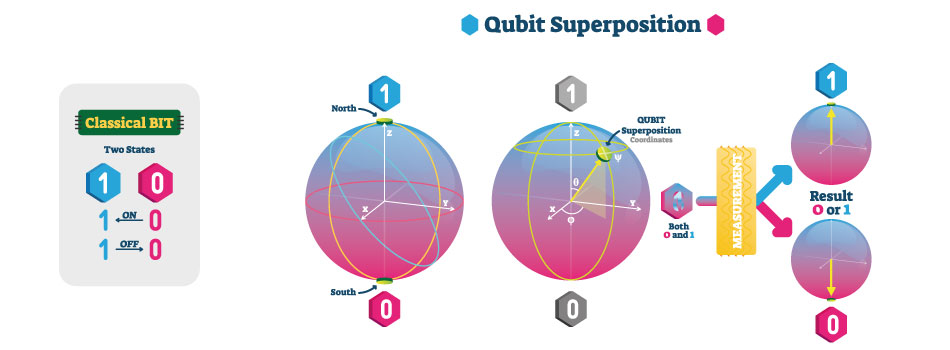QPU (Quantum Processing Units)
A quantum processing unit (QPU) is the central component of a quantum computer. It functions as the "brain" where the qubits reside and computations are performed. Similar to the central processing unit (CPU) of classical computers, a QPU requires significant support infrastructure. However, unlike CPUs, this infrastructure can vary considerably depending on the quantum computing modality used. In reality, quantum hardware is far more diverse and variable than classical computing systems at this stage of development.
Analogies are often made to explain QPUs, but they can sometimes be insufficient. For example, a Microcontroller Tips article titled "What is a Quantum Processing Unit?" compares QPUs to microcontrollers. This analogy is misleading because QPUs don’t control anything; they themselves must be controlled by external systems. Furthermore, the challenges mentioned in this article, such as control, temperature regulation, and manufacturing issues, apply specifically to superconducting processors and silicon spin processors but do not apply universally to all quantum modalities. Neutral atom quantum processors, for example, do not face these limitations, highlighting the diversity of quantum computing technologies currently under development. This diversity is also highlighted in a Medium article by QuAIL Technologies titled "Quantum Processing Units (QPUs)."
Another article by Huawei, titled "What is a Quantum Processing Unit?", compares QPUs to CPUs, which provides a closer analogy. However, the claim that QPUs compute faster than CPUs requires clarification. In reality, QPUs perform computations much more slowly than CPUs but are far more efficient for certain types of problems. This efficiency can significantly reduce computation times for certain classes of problems. As with the "Microcontroller Tips" article, Huawei’s analysis of issues such as noise, scalability, and connectivity applies to certain modalities, but not to neutral atom processors or other emerging technologies.
Perhaps the most apt analogy for QPUs regarding their future role is that of the graphics processing unit (GPU). Just as CPUs continue to handle most computation today, they will remain at the heart of future computing architectures. GPUs and other specialized processors will continue to handle specific tasks as they do today. However, QPUs are expected to join this group as an additional specialized processor to solve specific computational problems. Although QPUs and GPUs perform fundamentally different types of computation, their role within computing systems—as specialized tools for specific tasks—will be strikingly similar.
1. What is a Quantum Processing Unit?
The quantum technology that goes into a quantum processor can vary significantly. The computing process can vary quite a bit, as well. Just a few examples of qubit modalities and their supporting technologies to showcase the extent of this variety include:
-
Neutral atoms in vacuum chambers, cooled and controlled by lasers
-
Electronic circuits, cooled by dilution refrigerators and controlled by microwaves
-
Individual electrons, trapped in vacuum chambers like ionized atoms, but cooled by dilution refrigerators and controlled by microwaves
-
Photonic integrated circuits at room temperature, but with cryogenically-cooled detectors and controlled by physical hardware
There are quite a few more modalities in development than are listed above, but these four alone already demonstrate quite a bit of variation. Some of the other modalities use similar technologies, but they differ in what actually constitutes a qubit.
2. How do quantum processing units (QPUs) use qubits to solve problems?
Quantum processors, or QPUs, take a radically different approach to performing calculations than classical computers. While traditional computers follow deterministic logic, performing each step of a complex calculation sequentially, quantum circuits composed of qubits use the fundamental principles of quantum mechanics to simultaneously process large amounts of data. This unique capability offers a new way to solve certain types of problems, with potentially exponential efficiency gains in specific fields such as optimization, molecular simulation, or machine learning.
Qubits: at the heart of quantum computing: Unlike bits in classical computers, which can only assume two states (0 or 1), qubits can exist in a superposition of states. This means that a qubit can simultaneously represent 0, 1, and all possible combinations between these two states. For example, a system composed of multiple qubits can maintain a superposition of an exponential set of values relative to the number of qubits. This property allows QPUs to simultaneously explore a much larger solution space than traditional computers. In QPUs developed by IBM, qubits are often made from superconducting or semiconductor materials. These superconducting qubits are cooled to extremely low temperatures to minimize external disturbances and maintain their quantum coherence, a state essential for performing precise calculations.
Entanglement: An Extra Power: Another key property of quantum systems is entanglement. When two qubits are entangled, their states become interdependent, even if they are physically separated. This means that a measurement of one instantly affects the state of the other. This interdependence allows quantum algorithms to exploit complex correlations between data, which is impossible to reproduce with independent classical bits. Entanglement is therefore a fundamental tool for solving certain problems where complexity increases rapidly with the size of the system.
From superposition to binary result: At the end of a quantum computation, the system must provide a result understandable to the classical world. The data is converted into binary code: each qubit is measured as being either in state 0 or in state 1. The probability of obtaining one or the other state depends directly on its contribution to the superposition during the computation. This measurement process is crucial but delicate, as it leads to "decoherence," i.e., the loss of the system’s quantum properties.
The fundamental principles of quantum technologies Quantum technologies are based on four key principles that differentiate these systems from classical computers:
-
Superposition: Allows a qubit to exist in multiple states simultaneously.
-
Entanglement: Creates a dependency between entangled qubits, facilitating parallel and correlated processing.
-
Nonlocality: Allows quantum effects to act instantly over large distances.
-
Interference: Used to amplify correct solutions and reduce incorrect ones during computation.
These properties allow QPUs to use either real particles (such as trapped ions or molecular qubits) or material systems that mimic their behavior (such as superconducting qubits). Thanks to these unique characteristics, quantum processors can perform calculations impossible with classical binary bits, paving the way for a technological revolution in diverse fields such as cryptography, computational chemistry, and artificial intelligence.
Types of qubits: * Superconducting qubits: Made from superconducting materials operating at low temperatures, these qubits are favored for their speed in performing computations and fine-tuned control.
-
Trapped ion qubits: Trapped ions can also be used as qubits and are noted for long coherence times and high-fidelity measurements. Ions are atoms with electrical charge.
-
Quantum dots: Quantum dots are small semiconductors that capture a single electron and use it as a qubit, offering promising potential for scalability and compatibility with existing semiconductor technology.
-
Photons: Photons are individual light particles used to send quantum information across long distances through optical fiber cables and are being used in quantum communication and quantum cryptography.
-
Neutral atoms: Commonly occurring neutral atoms charged with lasers are well suited for scaling and performing operations.
Certain types of qubits are better suited for certain tasks, although all known qubits are still highly sensitive. QPUs used in functional quantum computers require significant support hardware and software to maintain proper calibration and handle external noise.
3. Why the QPU is the next GPU ?
Quantum Processing Units (QPUs) represent a groundbreaking leap in computing technology. Unlike classical processors, QPUs leverage qubits and quantum circuit architectures to solve problems that are computationally intractable for traditional systems, such as molecular simulations or large-scale optimization challenges. The evolution of GPUs revolutionized classical computing by enabling parallel processing for graphics, AI, and simulations. QPUs aim to push these boundaries further through quantum mechanics principles like superposition, where qubits exist in multiple states simultaneously, and entanglement, which allows qubits to correlate instantaneously across distances. This enables QPUs to process data at scales unattainable by classical hardware. Key application areas include drug discovery, where QPUs could model molecular interactions with unprecedented accuracy, and materials science, where they might design next-generation materials like high-efficiency batteries. In finance and AI, QPUs could optimize complex portfolios or enhance machine learning algorithms beyond current limits. However, challenges remain. Qubit stability, error correction, and the development of quantum-specific programming tools are critical hurdles. Integrating QPUs into existing infrastructures will require hybrid architectures that combine quantum, classical, and GPU-based systems. From a sustainability perspective, QPUs could reduce the energy demands of data centers by offering more efficient alternatives to GPU-heavy operations.
 .pdf
.pdf


